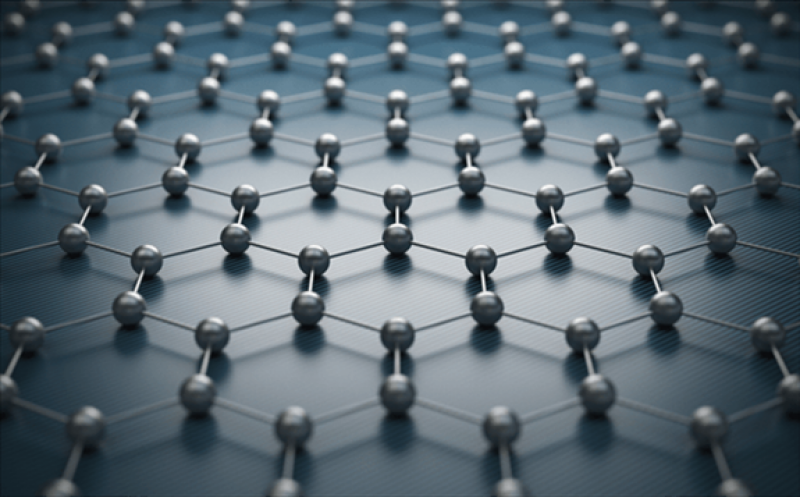The world's top supplier of graphene, Nanotech Energy Inc. has launched a high-performing non-flammable battery with a total investment of $27.5 million.
 Image Credit: koya979/Shutterstock.com
Image Credit: koya979/Shutterstock.com
With a mission to transfer graphene-based energy storage from research-based laboratory to commercialization, Nanotech Energy (Revolutionizing the way we power your world, n.d.), headquartered in Los Angeles, offers graphene-based products in different applications, such as batteries, conducting electrodes, inks, epoxy, and antistatic coatings. The company aims to increase its large-scale manufacturing of high-quality graphene in the direction of safer and more powerful battery technology.
Lithium-Ion Batteries
Since Sony first introduced lithium-ion (Li-Ion) in 1991, they are the most commonly used efficient batteries in electronic applications such as phones, laptops, and electric vehicles.
As Li-Ion production costs have decreased by over 50% in 2014 in comparison to 2007 (Iclodean, Varga, Burnete, Cimerdean, & Jurchiș, 2017), the batteries have revolutionized the way society uses energy.
Negatives of Using Lithium-Ion Batteries
The products with built-in Li-ion batteries have previously been known to cause damage to the wires around the batteries, leading to short-circuiting (Battery University Group, n.d.). Short-circuiting leads to the release of the energy, resulting in the rising of the temperature to hundreds of degrees within a few milliseconds. This extreme rise in temperature is the main cause of the batteries catching fire.
These concerns have greatly swiped the public welfare that the Federal Aviation Administration (FAA) has banned spare Li-ion batteries on passenger planes and the U.S. Postal Service, such as Federal Express (Nanotech Energy Inc., 2020). The Nanotech Energy Graphene SuperBattery safely delivers efficient, fast charging and long-lasting battery power, with the prospect of replacing deficiencies of current battery technologies by introducing the incredible properties of graphene.
Graphene-Based Batteries
For the past decade, scientists and engineers have focused on using graphene in different applications, utilizing its properties of being the strongest, lightest, and most conductive materials. This gives graphene great potential to substitute for traditional materials that require efficient properties of conductivity (University of Arkansas, 2017). Due to its characteristics of being light and durable, a graphene battery is suitable for high capacity energy storage, as well as for short charging times (Graphene-info, 2019). While it has a prospect of extending the battery’s life, adding graphene results in requiring fewer amounts of carbon to achieve the same amount of conductivity.
Creating a hybrid of Vanadium Oxide (VO2) and graphene have also been researched to be used on Li-ion cathodes and present quick charge and discharge with large charge cycle durability.
Non-Flammable Graphene Batteries
Graphene plays an important role in assisting the high-energy capacity of VO2 with excellent electrical conductivity. In recent news, an Italy-based company, Directa Plus, has signed an agreement to supply graphene to a US-based company, NexTech Batteries, to produce lithium-sulfur batteries (Peleg, 2020). According to Nanotech Energy, graphene-based batteries have the capability of withstanding the volume changes of the battery electrodes during charge and discharge, reducing the chances of an internal short circuit.
The University of Arkansas researchers have introduced an innovative and adaptable method for turning graphene oxide into a non-flammable, flexible, non-toxic, and mechanically strong graphene membrane that can also be used in large-scale production (Turgut, Tian, Yu, & Zhou, 2017). This finding has opened a way to mass-produce graphene and to improve a host of products, from fuel cells to solar cells to supercapacitors and sensors.
A research paper has recently been published on non-flammable inorganic liquid electrolyte LiFePO4/Graphite batteries for commercial high power applications (Ramar, Pszolla, Rapp, Borck, & Zinck, 2020).
With a clear forecast of decrease in battery cost by 2025, reaching a price of 225 Euros/kWh (Iclodean, Varga, Burnete, Cimerdean, & Jurchiș, 2017), Nanotech Energy’s batteries have the further challenge of making their batteries affordable for long-term prospects. However, with their super long-lasting graphene-based batteries, the company confirms its batteries will have a positive economic impact as they are reported to be less expensive than lithium-ion batteries. The implementation of these batteries will expand across various applications in many fields, such as laptops, computers, safer electric vehicles, telephones, and aerospace applications. Nanotech Energy’s commencement with developing a high-performance, non-flammable graphene-based battery for Daimler AG vehicles and electric automobiles have increased the enthusiasm and opportunities in this field. Next, the company has a high ambition of releasing an environmentally friendly battery that can charge 18 times faster than any current batteries available on the market (Nanotech Energy Inc., 2020).
This article is reproduced at www.azonano.com